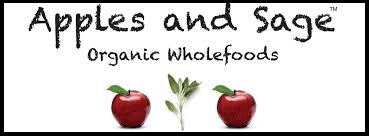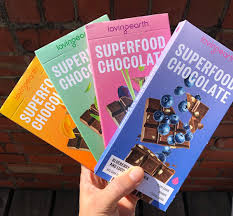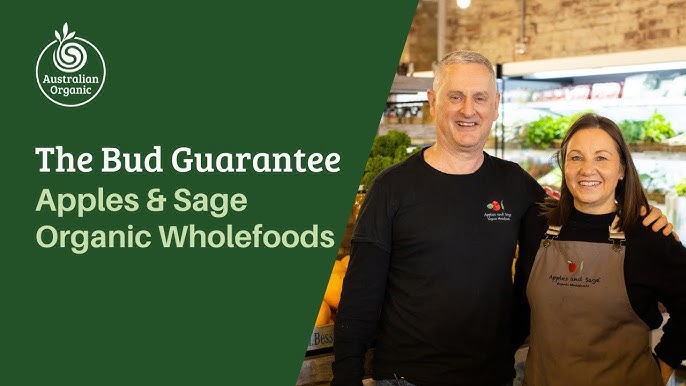Apples And Sage Organic Wholefood: Embrace Healthy Living

Apples and Sage Organic Wholefood is more than a store; it’s a haven for health enthusiasts. Welcome to a world where fresh, organic food reigns supreme.
Introduction To Apples And Sage Organic Wholefood
Organic wholefoods are gaining popularity for their health benefits and environmental impact. Apples and Sage Organic Wholefood offers a variety of fresh, natural products. These foods are grown without synthetic pesticides, fertilizers, or GMOs.
Importance Of Apples And Sage Organic Wholefood
Organic foods reduce exposure to harmful chemicals. They are grown using natural methods. These foods are often fresher because they don’t contain preservatives. Organic farming supports biodiversity and soil health. It also reduces pollution and conserves water. Choosing organic foods helps support sustainable practices.
Benefits Of Apples And Sage Organic Wholefood
Wholefoods are foods in their natural state. They are not processed or refined. Wholefoods retain their nutrients and fiber. They help maintain a healthy weight and reduce the risk of chronic diseases. Wholefoods provide essential vitamins and minerals. Eating wholefoods improves digestion and energy levels.

Apples: A Nutritional Powerhouse
Apples are more than just a tasty snack. They offer a variety of health benefits. This fruit is packed with essential nutrients. Eating apples can improve your overall well-being.
Nutritional Profile of Apples And Sage Organic Wholefood
An apple a day provides important vitamins and minerals. Apples are rich in fiber, which aids digestion. They also contain vitamin C, which boosts the immune system. Apples have antioxidants that protect your cells from damage. A medium-sized apple has about 95 calories. It also provides a good amount of potassium.
Health Benefits Of Apples And Sage Organic Wholefood
Apples can help in weight management. They are low in calories and high in fiber. This makes you feel full longer. Apples also support heart health. The fiber in apples can lower cholesterol levels. The antioxidants in apples help reduce the risk of chronic diseases. Apples can also improve brain health. Eating apples may help protect against memory loss.
Including apples in your diet is a smart choice. They are easy to add to many dishes. Enjoy them raw, in salads, or as a part of cooked meals. Apples truly are a nutritional powerhouse.
Sage: The Ancient Herb
Sage, an ancient herb, is cherished for its unique flavor and health benefits. It has a long history of use in various cultures. Sage is known for its earthy, slightly peppery taste. This herb is a favorite in many organic wholefoods recipes.
Historical Uses Of Sage
Sage has been used since ancient times. Egyptians used it in their rituals. Romans believed it could improve memory. In medieval Europe, sage was a remedy for various ailments.
Here are some historical uses of sage:
- Promoting digestive health
- Improving memory
- Healing wounds
- Reducing inflammation
Sage was also used to ward off evil spirits. Its medicinal and spiritual significance made it a staple in many households.
Nutritional And Medicinal Properties
Sage is packed with vitamins and minerals. It is a good source of vitamin K, vitamin A, and calcium. These nutrients support bone health and immune function.
| Nutrient | Amount per 1 tsp (0.7g) |
|---|---|
| Vitamin K | 34% of Daily Value |
| Vitamin A | 1% of Daily Value |
| Calcium | 1% of Daily Value |
Sage also contains antioxidants. These compounds help protect cells from damage. This may reduce the risk of chronic diseases.
Medicinally, sage has anti-inflammatory properties. It can help reduce symptoms of arthritis. Sage is also known to improve brain function. Studies suggest it may enhance memory and concentration.
Here are some benefits of sage:
- Boosts immune system
- Reduces inflammation
- Improves brain function
- Supports bone health
Incorporating sage into your diet is simple. Add it to soups, stews, and roasted vegetables. Its health benefits and rich flavor make it a valuable addition to any meal.

Combining Apples And Sage
Combining apples and sage brings together sweet and savory flavors. This pairing offers a delightful contrast. Apples have a crisp and juicy texture. Sage adds an earthy and aromatic touch.
Both ingredients are rich in nutrients. They create a balanced dish. Apples provide vitamins and fiber. Sage offers antioxidants and anti-inflammatory properties. Together, they make meals both tasty and healthy.
Flavor Combinations
The sweet and tart taste of apples pairs well with the herbal notes of sage. This mix works in various dishes. It enhances both sweet and savory recipes. The crispness of apples complements the soft texture of cooked sage. This creates a pleasant mouthfeel.
Think about roasted apples with sage. The sweetness of the apples caramelizes. The sage adds a subtle, savory aroma. This combination is ideal for fall dishes. It brings warmth and comfort to the table.
Recipes With Apples And Sage
One popular recipe is apple and sage stuffing. Use whole grain bread, chopped apples, and fresh sage. Combine these with onions and celery. Bake until golden brown. This stuffing is perfect for holiday meals.
Another recipe is apple and sage pork chops. Season the pork chops with salt, pepper, and chopped sage. Sear the chops until browned. Add apple slices and cook until tender. This dish is simple but full of flavor.
Try apple and sage soup for a unique starter. Sauté onions, garlic, apples, and sage in a pot. Add vegetable broth and simmer. Blend until smooth. This soup is both comforting and nutritious.
Sourcing Apples And Sage Organic Wholefood
Organic wholefoods are crucial for a healthy lifestyle. But sourcing them can be tricky. This section will help you find the best organic wholefoods. Learn about reliable sources and important certifications to look for.
Finding Reliable Sources
Finding reliable sources for organic wholefoods is essential. Look for local farmers’ markets. They often sell fresh, organic produce. Visit co-ops or health food stores. These stores usually offer a variety of organic items.
Online stores can also be a good option. Many websites specialize in organic wholefoods. They deliver straight to your door. Always check reviews and ratings before buying. This helps ensure quality and reliability.
| Source | Pros | Cons |
|---|---|---|
| Farmers’ Markets | Fresh produce, supports local farmers | Limited variety, seasonal items |
| Co-ops/Health Food Stores | Wide variety, trusted brands | Can be expensive |
| Online Stores | Convenient, home delivery | Shipping costs, need to verify quality |
Certifications To Look For
Certifications ensure the food is truly organic. Look for the USDA Organic label. This label guarantees the food meets strict organic standards.
- USDA Organic: Ensures no synthetic fertilizers or pesticides are used.
- Non-GMO Project Verified: Confirms the food does not contain genetically modified organisms.
- Fair Trade Certified: Ensures fair wages and conditions for farmers.
Other certifications include Demeter and Organic Farmers & Growers. These certifications also ensure high standards. Always check for these labels when buying organic wholefoods.
Incorporating Apples And Sage Organic Wholefood Into Your Diet
Incorporating wholefoods into your diet can enhance your overall health. Wholefoods are natural foods that are not processed. They are rich in nutrients and support a balanced diet. Apples And Sage Organic Wholefoods offer a variety of options to choose from.
Meal Planning Tips
Planning meals helps you include wholefoods in your diet. Start with these tips:
- Make a weekly menu: List all meals for the week. Include fruits, vegetables, whole grains, and proteins.
- Shop smart: Buy fresh produce and organic items. Avoid processed foods.
- Prep ahead: Cut vegetables and fruits in advance. Store them in the fridge.
- Balance meals: Ensure each meal has a good mix of nutrients.
Simple Wholefood Recipes
Try these simple recipes to get started with wholefoods:
Quinoa Salad
- Ingredients:
- 1 cup quinoa
- 2 cups water
- 1 cup chopped vegetables (carrots, cucumbers, tomatoes)
- 1/4 cup olive oil
- 2 tbsp lemon juice
- Salt and pepper to taste
- Instructions:
- Rinse quinoa under cold water.
- Boil water and add quinoa.
- Cook for 15 minutes or until water is absorbed.
- Mix quinoa with chopped vegetables.
- Drizzle with olive oil and lemon juice.
- Season with salt and pepper.
Fruit Smoothie
- Ingredients:
- 1 banana
- 1/2 cup berries (strawberries, blueberries)
- 1 cup spinach leaves
- 1 cup almond milk
- Instructions:
- Combine all ingredients in a blender.
- Blend until smooth.
- Pour into a glass and enjoy.
Vegetable Stir-Fry
- Ingredients:
- 1 cup broccoli florets
- 1 bell pepper, sliced
- 1 carrot, sliced
- 2 tbsp soy sauce
- 1 tbsp olive oil
- 1 clove garlic, minced
- Instructions:
- Heat olive oil in a pan.
- Add garlic and sauté for 1 minute.
- Add vegetables and stir-fry for 5-7 minutes.
- Add soy sauce and cook for another 2 minutes.
- Serve hot with brown rice or quinoa.
Sustainability And Organic Farming
Apples And Sage Organic Wholefoods promote sustainability through organic farming. They offer fresh, healthy produce without harmful chemicals. Their practices support a cleaner environment and healthier lifestyle.
Apples And Sage Organic Wholefoods focuses on sustainability and organic farming. This approach supports the environment and promotes healthier food choices. It’s a win-win for everyone.
Environmental Benefits
Organic farming reduces pollution. It uses fewer chemicals, which helps keep water sources clean. Healthy soil is another benefit. Organic farmers use compost and natural fertilizers. This keeps the land fertile.
Biodiversity also improves. Organic farms often have a variety of plants and animals. This balance helps ecosystems thrive.
Supporting Local Farmers
Buying organic supports local farmers. It keeps money in the community. Farmers get fair prices for their products. This means they can sustain their farms.
Local farmers often use traditional methods. These methods respect the land. They pass down knowledge through generations. Supporting them keeps these practices alive.
Organic farming is labor-intensive. It creates more jobs in the community. Workers benefit from safer working conditions. They are not exposed to harmful chemicals.
Enjoying Apples And Sage Organic Wholefoods means choosing a healthier life. It also means supporting local farmers and protecting the environment.
Embracing Healthy Living
Enjoy the benefits of Apples and Sage Organic Wholefoods by embracing healthy living. Fresh, organic choices lead to a vibrant lifestyle.
Choosing Apples And Sage Organic Wholefoods means choosing a healthier lifestyle. Organic wholefoods offer numerous benefits for your body and the environment. They provide essential nutrients, reduce exposure to harmful chemicals, and support sustainable farming practices.
Long-term Health Benefits of Apples And Sage Organic Wholefood
Eating organic wholefoods like those from Apples And Sage boosts long-term health. They are rich in vitamins and minerals. These nutrients support your immune system. Organic wholefoods contain fewer pesticides and chemicals. This reduces the risk of chronic diseases. Consuming organic foods can improve digestion. They are often higher in fiber and antioxidants.
Commitment To Organic Wholefoods
Apples And Sage is committed to providing quality organic products. They source foods from trusted organic farms. Their dedication ensures you receive the best wholefoods available. By supporting Apples And Sage, you support eco-friendly practices. This commitment helps protect the planet for future generations. Embrace the benefits of organic wholefoods today. Enjoy a healthier life with Apples And Sage Organic Wholefoods.
“`

Frequently Asked Questions
What Are The Benefits Of Organic Apples?
Organic apples are free from pesticides and chemicals. They are richer in vitamins and antioxidants. They also have better taste and texture.
How To Store Organic Wholefoods Properly?
Store organic wholefoods in a cool, dry place. Use airtight containers to maintain freshness. Keep them away from direct sunlight.
Are Apples And Sage A Good Combination?
Yes, apples and sage complement each other well. They create a balanced flavor. Perfect for various dishes and recipes.
Why Choose Organic Wholefoods?
Organic wholefoods are healthier and more nutritious. They are free from harmful chemicals. They support sustainable farming practices.
Conclusion of Apples And Sage Organic Wholefood
Choosing Apples and Sage Organic Wholefoods means embracing a healthier lifestyle. Fresh, organic produce supports your well-being. Enjoy the natural flavors and benefits. Make a positive impact on your health and the environment. Opt for quality, taste, and sustainability. Your body will thank you.
Make the switch today. Feel the difference with every bite. Experience the joy of eating clean and green. Live better, eat organic.




Leave a Reply